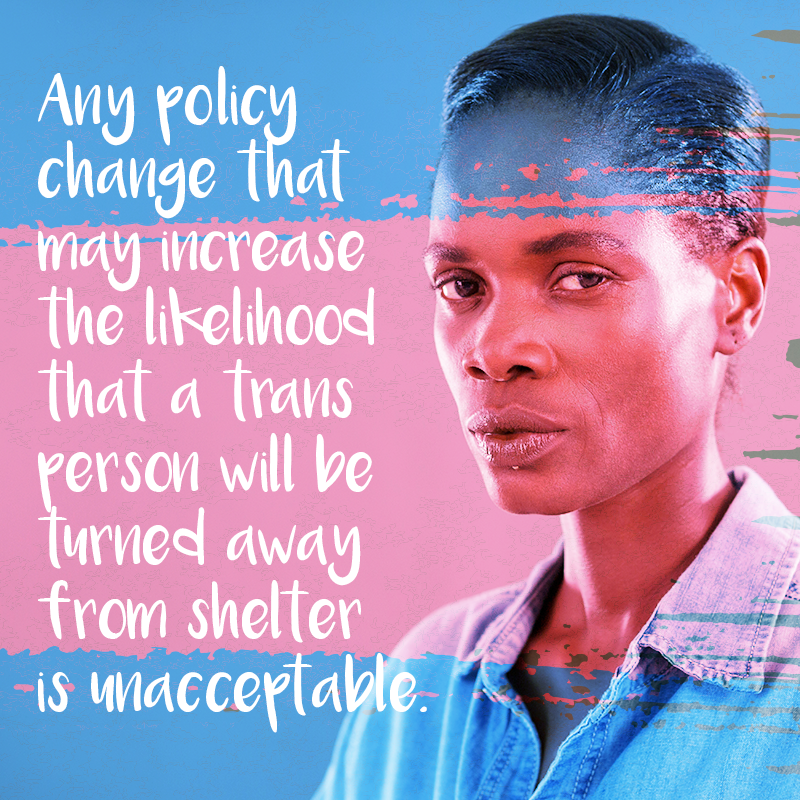Equal housing access saves trans lives
Written by SAFE
Jacey is a 20-year-old, formerly homeless, Black transgender woman. Until six months ago, she never had a safe home. Her family abandoned her because they wouldn’t accept her as trans. She found herself with no permanent place to live throughout her teens, experiencing harassment, sexual abuse, and trafficking before being arrested at 17 for assault – for fighting off a man who tried to sexually assault her. After a year in jail, where Jacey experienced sexual and physical violence because she was misgendered and housed with male prisoners, she was discharged into homelessness.
Without stable housing, the likelihood of violence and abuse skyrockets. As such, we are deeply concerned and opposed to proposed rule changes that would threaten shelter access for trans individuals.
In May, the Department of Housing and Urban Development proposed a new rule that would allow federally funded shelters around the country to weigh additional factors, including religious beliefs and a person’s gender identity, when determining whether to admit an individual. Without these previous specific protections for the trans community, shelters would be able to turn away individuals or force them to use the sleeping quarters and bathrooms that don’t correspond with their gender identity.
These protections are often life-saving for trans individuals. Any policy change that may increase the likelihood that a trans person will be turned away from shelter is unacceptable.
- The 2015 U.S. Transgender Survey found that in one year, 70% of trans people said they were discriminated against in shelters, and just 16% of trans people reported owning homes, compared to 63% of the general population.
- According to the National Center for Transgender Equality, 70% of those who accessed a homeless shelter were removed or faced mistreatment for being trans, or were physically or sexually assaulted.
- HUD’s website notes that 20-40% of homeless youth identify as LGBTQIA+.
Youth rejected by their families are especially vulnerable to the violence that homelessness brings, particularly for Black and trans people of color. To turn them away from housing is to contribute to a climate that disregards the value of trans lives.
In Jacey’s case, she met an outreach worker who connected her with a peer support group. She then enrolled in a rapid rehousing program for young adults and was provided case management, rental assistance, and help finding an apartment. Today, she is living in her own apartment, looking for a job, and building a supportive community of friends.
None of this would have been possible without access to shelter and housing services that affirmed her identity and prioritized her safety.
SAFE acknowledges that in the pursuit of building a less violent world for everyone, federal protections are necessary for the trans community to feel comfortable when seeking housing in a time of need. We believe that no one deserves to be abused and everyone deserves a safe place to call home.